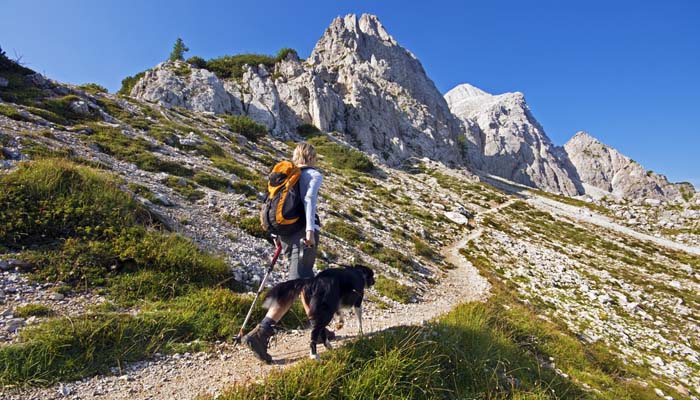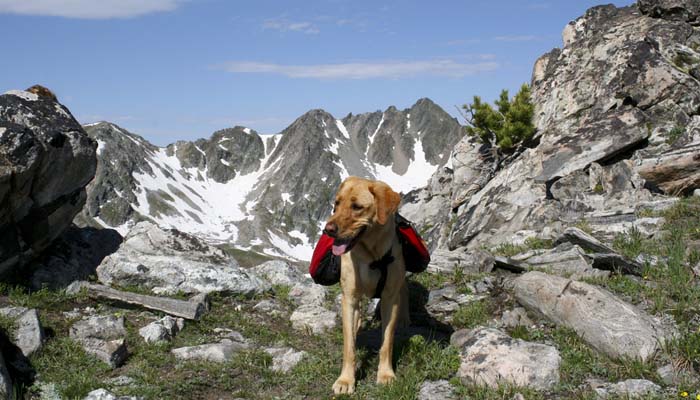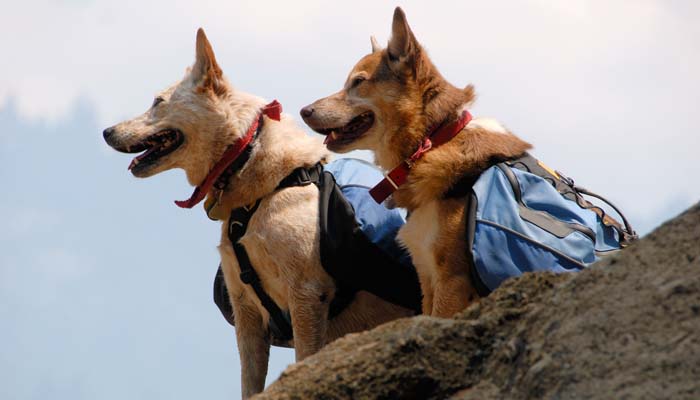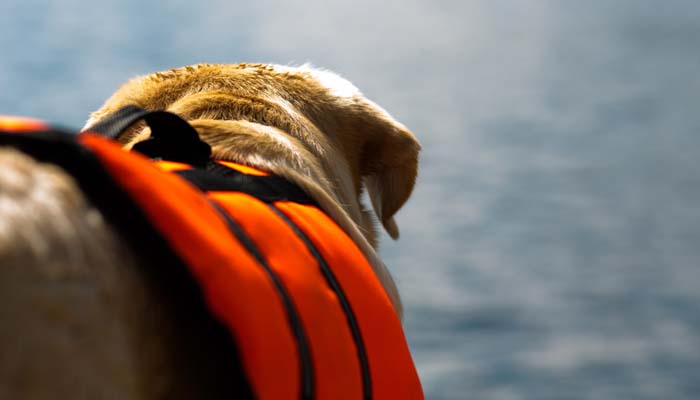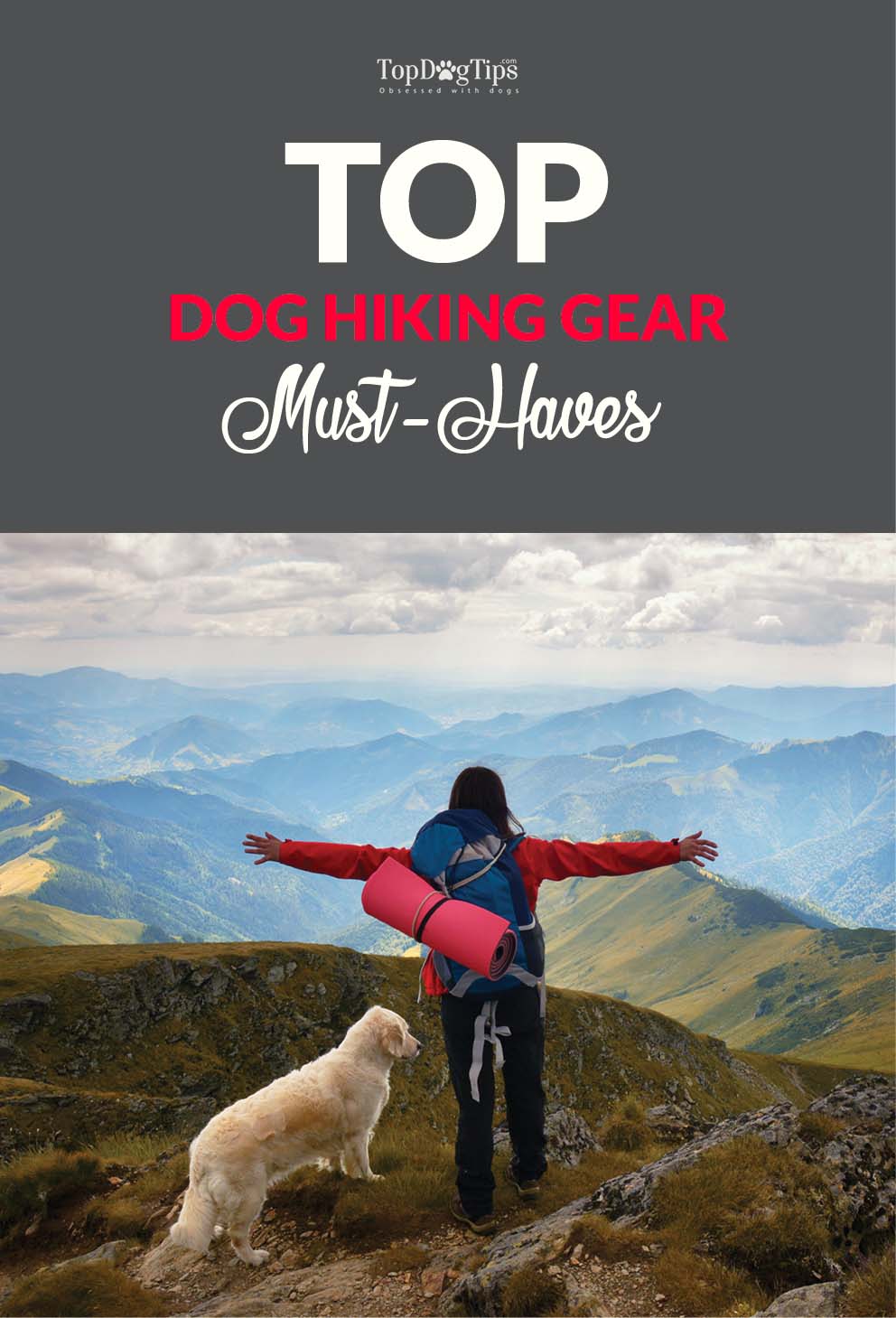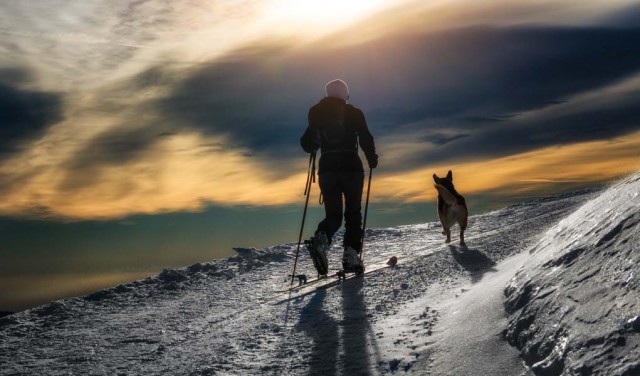
Table of Contents
So you’ve decided to take your dog out for a journey in the great outdoors.
There’s a three-day weekend coming up, and the weather promises to be glorious.
You’ve got a great pair of comfy hiking boots and a new backpack and picked up some fancy gear at the local sporting goods shop, but you don't know what dog hiking gear you need when hiking with dogs.
It’s time to outfit your four-legged friend, but you don’t want to go overboard.
With all of the rugged doggie backpacks and fancy coats out there, it might be hard to narrow down what counts as essential equipment and what should be left behind.
The number one thing that you'll want to remember is not to overload your pup or yourself.
When you begin your hike, it may not feel as if your pack is very heavy, but you'll find out very quickly how taxing it can be to carry all that weight on your shoulders.
It will be best if you stick to packing as little as possible to get by on your adventure.
READ ALSO: A Basic Guide to Hiking with Dogs
Dog Hiking Gear Must-Haves
What You Need When Hiking with Dogs
Make sure your dog is up for the challenge
The first step to take when preparing to bring your dog on a hike is to get her evaluated by a veterinarian and check whatever precautions the two of you need to take.
First, you’ll want to assess her degree of fitness so that the two of you can start at an appropriate level. Often, hiking and outdoor clubs will rate trails depending on their level of difficulty.
Whether you already know which trail you want to explore or you’re looking for a new adventure, a little bit of research will usually tell you if the trail consists of steep inclines and rickety bridges or stroller-worthy paved paths.
Then, you can match up your and your dog’s skill level to the trail’s difficulty level.
Secondly, you will want to make sure that your dog is up-to-date on all of her shots.
Regardless of whether your intended hiking spot is deep in the wilderness or the urban jungle, encounters with wildlife are common. Raccoons, squirrels, bats, and insects can carry a wide range of diseases, not the least of which is rabies.
Wild animals are also unpredictable and especially dangerous if sick. If your dog is injured, one of the biggest dangers to your animal comes not from the cut or gash itself but from infection.
Hopefully, you won’t run into trouble at all, but it’s always good to be prepared.
RELATED: The Best Dog Harness Review
What dog hiking gear and supplies to pack
First Aid Kit for Dogs
That brings us to what you'll need to have in your dog hiking gear backpack when hiking with dogs.
First, and most importantly, you'll need a quality first aid kit.
Most of what should go into a canine first aid kit is the same as what you’d find in a kit designed for yourself.
Items like gauze, bandages, tweezers, blunt-tipped scissors, and cotton swabs are great to have.
You’ll also want to throw in a list of important numbers, like your dog’s vet, the nearest animal hospital, and an emergency contact.
It’s also a good plan to write out a list of any vitamins or medications your dog takes. If there’s an emergency and you’re stressed, it could be difficult to recall these things off of the top of your head.
If your dog takes any regular medication, you should bring at least enough for the time that you are planning to be gone, plus two extra days. This way you're sure to have enough if you are gone longer than expected.
Bring an antihistamine if your dog has had them before, and talk to your vet about picking up some antivenin if there’s a risk of snake bites. You will also want to bring a tick-twister tool.
RELEVANT: Camping With Dogs – Tips, Guidelines, Do’s And Don’ts
Water and Food
You will both need to consume at least 50% more food and water than normal if you’ll be walking for most of the day.
You can also check with your vet that your buddy will be getting the correct amount of calories for the estimated energy that he will be using.
This is an especially good idea if you’re going on a multi-day hike.
Fresh water is the next vital element of your doggie hiking preparation pack.
While packing up plenty of fluids to quench your thirst on the trail, don’t forget to include plenty for your dog, too. It’s never good to let your dog drink out of puddles or streams.
As clean and natural as they may look, you can’t tell (without running several chemical tests) what might be present in the form of chemical runoff or microorganisms.
Dogs are prone to many of the same bacterial infections as people, including digestive pathogens or diseases from carcasses upstream.
 Of course, if you’ve packed water, you’ll want to pack a bowl to put it in. You can find silicone bowls that are light and can be squished in a backpack to save on space. Guyot Designs puts out several popular designs in bright colors that can be bought on Amazon.
Of course, if you’ve packed water, you’ll want to pack a bowl to put it in. You can find silicone bowls that are light and can be squished in a backpack to save on space. Guyot Designs puts out several popular designs in bright colors that can be bought on Amazon.
If you don’t like the silicone type, you can get foldable bowls made from water-resistant fabric or other synthetics. The idea is to go with something lightweight that you can take out and put away with ease.
Depending on the length of your intended hike, you may want to pack some dog food as well as water.
The best thing to do is to bring some of your dog’s regular kibble or her usual treats.
A hiking trip is not a good time to try out something new that your dog’s digestive system is not used to.
Having a tummy ache or diarrhea will make the trip a misery for your pooch, and you may not enjoy clean-up duty either.
Stick with the food your dog is already accustomed to, and try any new treats out at home to test your dog’s reaction before you go on your journey.
RELATED: Hiking with a Dog? Here's What You Need to Know
Dog Leash and Clothing
 Next to be packed up should be your dog’s leash. Most trails in national parks require your dog to be on a leash. Don’t take along an extendable leash or anything longer than six feet in length.
Next to be packed up should be your dog’s leash. Most trails in national parks require your dog to be on a leash. Don’t take along an extendable leash or anything longer than six feet in length.
You want to have enough control over your dog to be able to pull her out of the way of joggers and mountain bikers, as well as keep her from dashing off after random squirrels.
The best dog leash will keep your pet safe and out of trouble.
If you’ve found a great trail that’s dog-friendly, chances are that your fellow dog lovers have, too.
Make sure your dog is socialized to behave herself around other dogs and people. If your dog is even the slightest bit aggressive toward others, you need to leave her home.
RELATED: How to Take Great Photos of Your Dog When Hiking
If the weather is expected to change while you and your dog are out on the trail, or if you’ve ventured out in the fall or winter, you may want to equip your pooch with a coat or jacket.
Which design you choose will naturally depend a great deal on your dog.
You may want to go with something that has reflective strips or lights in case you’re caught out longer than you had intended to be.
Make sure to try your dog’s new clothes at home first to ensure that they don’t cinch up uncomfortably or come unfastened too easily.
If you are hiking in hot weather, a dog vest is ideal. You can soak it with water, which will dissipate heat as the water evaporates and cool your pooch down.
If you'll just be hiking for the day, you can look into purchasing a cooling vest that is equipped with a cold pack.
Remember to bring dog boots if the terrain is very salty, muddy, or rocky. They will protect your dog’s paws and soft pads from these conditions and prevent cuts and grazes.
Try the boots out first at home and on short trips, as it may take a little while for your furry friend to get used to them – he may do the ‘robot walk’ for a while!
Make sure that your doggy booties fit your pooch correctly – close around the ankle but not tight – for your dog’s comfort.
RELATED: Does Your Puppy Need Dog Boots?
Dog Backpack
You can get some of the weight off of your shoulders by purchasing a dog backpack for your canine companion.
This way, she can be responsible for carrying her own supplies. Do some research and make sure to test the pack many times before your hike to ensure its comfort and safety.
The best way to fit your dog’s backpack is to measure the circumference of her chest and correspond it to the label measurements on pet store doggy packs.
Don’t be afraid to ask a store assistant for help if you’re unsure or if your dog’s size seems to fall between two categories.
RELATED: Dog Travel Tips – How to Vacay With Your Pet
To fit the backpack, place the middle of the pack on your dog’s back. The straps usually fasten around the waist, chest, and/or around the neck.
Adjust the straps to tighten the pack to fit the pooch’s body, and make sure you don’t pull too hard; the straps should be tight enough not to come loose or slip off but not so tight that they hurt your dog.
You should be able to fit two fingers’ width between the strap and your dog’s body.
All doggie backpacks are designed to provide equal weight distribution. They also feature dividers so that food and water can be kept separate from other supplies.
A collapsible food dish fits inside the pack or can be zipped on the outside of some backpacks.
There is usually a space to keep a flashlight, which is very useful for evenings or early mornings when it’s dark, sunless, or foggy.
RELATED: 5 Best Dog Travel Crates for Long Trips
Doggy backpacks also often feature pockets for keeping a cold pack from your freezer before going hiking, which is great for hot climates.
The top handle of the backpack makes it easy to hold onto your dog if you’re crossing a stream or climbing small inclines.
It’s worth considering a waterproof pack in case of any downpours or snow.
Many packs are reflective, which is a highly recommended safety feature.
If your dog backpack is non-reflective, you can pick up strips or armbands given out for pedestrians’ road safety and simply loop it through the top of the bag so you can see what your pooch is getting up to at all times.
Life Jacket
When discussing what you need to have when hiking with dogs, a life jacket is very important to mention; if you are planning to be near lakes, rivers, or streams, it is vital to bring a life jacket for yourself and especially for your dog.
Contrary to popular belief, not all dogs are natural swimmers, and it is always better to be safe than sorry when it comes to your beloved dog’s welfare.
READ THIS: 19 Health Tips for Picking the Best Dog Clothes and Footwear
There are heavy-duty life jackets meant for white water environments or rivers, while other jackets are designed for boating on still lakes. Some jackets help your dog learn how to swim or keep her buoyed up when she tires herself out.
An option like this may be nice so you can have some fun on your hike teaching your dog to swim – if she can’t do so already.
The amount of buoyancy in the life jacket is based on the size of your dog, so it is important that you check this with the pet store you buy the jacket from. You should also limit the length of time your dog is in the water for his own safety. Call her out so she can enjoy a break after she has had a good splash about!
Bring a towel to dry off your dog after every swimming session, and make sure you clean off any salt, chemicals, or debris that may remain on her coat and in her ears. Dry your dog as much as possible to avoid the risk of infections or skin irritation.
RELATED: How to Prepare Your Dog for Camping
Additional Dog Hiking Gear and Tips
Some other important items to consider include:
- If you like to run with your dog on your hike, you can use a waist belt system, and while backpacking, you can use a leash that clips onto your own backpack.
- Cooling collars are great for hot days, and bring any creams for your dog’s ears for sun protection.
- Bring a tent to share with your buddy.
- Remember to bring your camera to capture the memories of you and your pal’s fantastic hike.
If you plan to sleep out during your hike, ensure you bring the correct sleeping items for different weather conditions. A sleeping bag each is necessary, and bring a self-inflating sleeping pad or a memory foam layer for your furry friend if you’ll be sleeping on rocky or uneven ground or if it’s expected to be cold.
Now that you have a basic idea of what key items need to go along with the two of you, you can embellish your hiking kit with GPS locators, booties, brushes, and colorful kerchiefs. It’s important to have fun, too, and if you’ve packed the essentials above, you can look forward to a stress-free climb.
READ NEXT: 10 Items You Need When Traveling with Dogs
Disclosure: We may earn affiliate commissions at no cost to you from the links on this page. This did not affect our assessment of products. Read more here and find full disclosure here.


